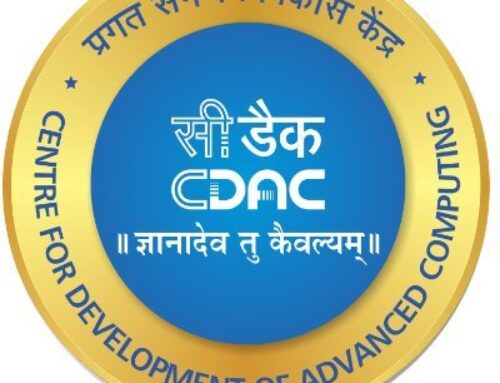The global Maintenance, Repair, and Overhaul (MRO) market is one of the cornerstones of the aviation industry, valued at over $82 billion in 2023 and projected to reach $126 billion by 2033. This growth is fueled by an increasing global fleet size, with emerging markets like India playing a pivotal role. India has already become the third-largest domestic aviation market globally, with the number of aircraft expected to surpass 1,400 by FY2030.
Within this booming market, the MRO sector in India alone is expected to triple its revenue to ₹5,500–₹6,000 crore by FY2028. This rapid expansion is driven by rising domestic air travel, government initiatives to strengthen MRO capabilities, and the establishment of advanced facilities.
As the industry grows more complex—with larger fleets, sophisticated aircraft systems, and rising sustainability expectations—traditional maintenance practices struggle to keep up. That’s where MRO Sentinel steps in, bringing a fresh perspective powered by advanced technology and practical innovation.
This isn’t just about digitizing inspections or adding automation for the sake of it. MRO Sentinel reimagines maintenance by connecting the dots between what technicians see during inspections and what the system knows from years of maintenance records, ensuring every step is smarter, faster, and better.
Let’s explore how MRO Sentinel uses state-of-the-art technology to address the challenges of modern Maintenance, Repair, and Overhaul (MRO) and where it’s headed next.
The Technology Behind MRO Sentinel
MRO Sentinel upgrades the whole MRO process to deliver unmatched accuracy, efficiency, and adaptability. Here’s a closer look at the tech powering this innovation:
AI-Driven Visual Inspection
MRO Sentinel uses a camera-equipped collaborative robot (cobot) to conduct high-definition visual inspections. These cobots are designed to move seamlessly around an aircraft, capturing detailed video footage of critical components. The captured data is processed by Generative AI models, which:
- Detect anomalies such as dents, cracks, and structural defects with high precision.
- Categorize issues based on severity, prioritizing critical repairs for immediate action.
- Extract images and create annotated visuals to guide technicians during the repair process.
The AI’s ability to consistently identify defects reduces reliance on human inspections, minimizing errors and speeding up the maintenance process.
Generative AI for Maintenance Records
One of MRO Sentinel’s standout features is its integration of GenAI for maintenance record management. This technology brings two key benefits:
- Global Accessibility: Maintenance records, repair instructions, and diagnostic data can automatically be translated into multiple languages. This ensures that technicians across different regions can access critical information in their native language, promoting accuracy and reducing communication barriers.
- Dynamic Updates: GenAI enables real-time updates to maintenance instructions. As new data from inspections is recorded, the system adjusts repair plans dynamically, ensuring technicians always work with the most up-to-date and standardized instructions.
Seamless Backend Integration
MRO Sentinel doesn’t stop at visual inspections. It connects inspection data directly to backend maintenance records, creating a feedback loop that streamlines workflows:
- Inspection results are cross-referenced with historical maintenance data, enabling tailored repair instructions specific to the aircraft’s history.
- Real-time updates ensure compliance with global regulatory standards and eliminate delays caused by manual documentation.
- Technicians can access step-by-step repair guides directly linked to the identified defects, reducing downtime and improving accuracy.
Future Applications: Expanding the Horizon
While MRO Sentinel already delivers transformative benefits, its technology opens the door to several exciting future possibilities:
Immersive Training with AR/VR
The integration of Augmented Reality (AR) and Virtual Reality (VR) is set to revolutionize technician training. By combining MRO Sentinel’s insights with AR/VR tools, technicians can practice complex repairs in simulated environments before working on actual aircraft.
- AR Applications: Technicians can use AR glasses to overlay repair instructions directly onto aircraft components during inspections.
- VR Simulations: Trainees can immerse themselves in lifelike scenarios, learning to diagnose and resolve issues in a controlled, risk-free environment.
Central Maintenance Computer (CMC) Integration
Although not yet implemented, MRO Sentinel is designed for future integration with Central Maintenance Computers (CMC). This will allow it to combine visual data with real-time system diagnostics, providing a holistic view of an aircraft’s condition.
- For instance, if a sensor detects irregular hydraulic pressure, MRO Sentinel could prioritize inspections of hydraulic components, streamlining diagnostics and repairs.
Predictive Maintenance at Scale
By analyzing historical data and real-time inputs, MRO Sentinel could predict when specific components are likely to fail. This predictive maintenance approach would allow airlines to schedule repairs proactively, minimizing unplanned downtime and optimizing fleet utilization.
Key Advantages of MRO Sentinel
MRO Sentinel isn’t just about faster inspections—it’s about smarter, safer, and more sustainable maintenance.
Efficiency and Speed
- Automated inspections reduce maintenance time by up to 50%.
- Dynamic repair instructions ensure technicians can act immediately, minimizing delays.
Global Accessibility
- GenAI-powered translations ensure that maintenance records and instructions are accessible in multiple languages, fostering global standardization and reducing miscommunication.
Cost Savings
- Predictive maintenance reduces unplanned costs by 10-20%.
- Optimized inventory management eliminates unnecessary stockpiling of parts.
Sustainability
- Switching to digital documentation saves over 200,000 sheets of paper per aircraft annually, preserving 12-15 trees per plane.
- Properly maintained aircraft achieve a 1% improvement in fuel efficiency, saving 3,000-6,000 tons of CO2 per airline annually.
- Extending component lifespans by 20-30% conserves raw materials and reduces waste.
Applications Beyond Aviation
While designed for the aviation sector, the versatility of MRO Sentinel’s technology means it can make an impact across industries:
- Shipping and Railways: Automated inspections and real-time record integration for cargo fleets.
- Renewable Energy: Maintenance optimization for wind turbines and solar panels.
- Oil and Gas: Enhanced safety inspections for offshore rigs and refineries.
- Manufacturing: Predictive maintenance for production lines in automotive, electronics, and consumer goods industries.
The Path Forward: Shaping the Future of Maintenance
MRO Sentinel represents the best of what technology can offer: a practical solution to real-world challenges, designed to evolve with the needs of the industry. By combining AI-driven inspections, intelligent integration with maintenance records, and future-ready capabilities like AR/VR training and predictive analytics, MRO Sentinel is setting a new standard for efficiency, safety, and sustainability.
Its ability to provide global, multilingual support ensures it can seamlessly adapt to the diverse needs of the aviation industry and beyond. As airlines and MRO providers embrace smarter maintenance practices, MRO Sentinel is poised to lead the charge toward a more connected, efficient, and sustainable future.
Because at its core, MRO Sentinel is more than a solution—it’s a vision for what maintenance can achieve when technology and innovation come together.
– Rahul Shah & Anshul Pandey.







